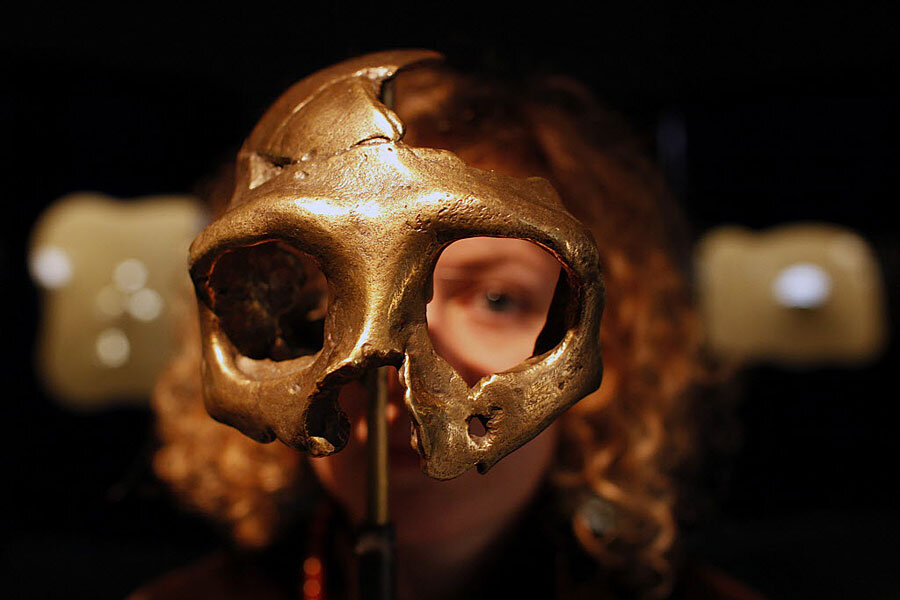Denisovans: Mysterious humans reveal clues to Homo Sapiens history
Loading...
More than 100,000 years ago, Homo sapiens made their way out of Africa and into Eurasia. But they weren't the first humans to make this trek. Other human species had already spread across Eurasia. These different groups met and mated, leaving marks in human genomes today.
The remnants of those trysts, buried in the genomes of all non-African modern humans, could yield hints into human evolution that won't appear in the fossil record. So researchers have been digging into modern-day human genomes in a hunt for those clues.
Studies have already revealed that all non-African modern humans have Neanderthals to thank for some 1 to 4 percent of their DNA. But researchers knew little about the contribution of interbreeding with Denisovans, a close cousin of Neanderthals. So a team of geneticists turned to the modern human population already known to have the most Denisovan DNA for a broader picture of the marks these archaic human species left.
The genomes of modern humans from Melanesia, a Pacific island region that includes Papua New Guinea, the Solomon Islands, Fiji, Vanuatu, and New Caledonia, are 1.9 to 3.4 percent Denisovan, according to a new study published Thursday in the journal Science. In other modern humans less than a percent, if any, of their genomes come from that archaic human.
But the team didn't stop there. They dug into the genome to locate the specific sequences Melanesians inherited from archaic humans.
Neanderthal and Denisovan sequences pepper the entire genome, study co-author Joshua Akey tells the Monitor. But there are some regions where the archaic DNA dominates, making up half or over half of the sequence. Those regions mostly contain genes related to the immune system.
"It seems like hybridization with archaic individuals provided our ancestors with some beneficial copies of genes that helped them survive and reproduce as they spread across the world," Dr. Akey says.
Because these archaic sequences appear so frequently in modern human genomes, they were probably advantageous traits and therefore selected for as Homo sapiens adapted to new environments. "It's a pretty efficient way to adapt to local environmental conditions," Akey says. "Just pick one up from the local resident population [of archaic humans] rather than sort of waiting for a new mutation to arise."
(A gene found in some modern Tibetans associated with the ability to thrive in high-altitude conditions was discovered to have been inherited from Denisovans too.)
But Denisovan and Neanderthal DNA isn't found everywhere in the modern genomes. The researchers spotted some regions with no trace of archaic genes. Akey says natural selection is likely to credit for removing those traits, as they were probably not advantageous.
"If you're interested in understanding genetically what distinguishes modern humans from archaic forms of humans, then these are the regions to look at," Akey says.
"The most exciting new thing about the paper is that it confirms that there have been multiple Neanderthal introgression events independently on several different human evolutionary lineages," Rasmus Nielsen, a researcher at the Center for Theoretical Evolutionary Genomics at the University of California, Berkeley who was not part of this study writes in an email to the Monitor. "Instead of thinking of Neanderthal admixture as something that happened just once or twice, we are now forced to consider the possibility that there has been extensive admixture between Neanderthals and humans in the entire range in which they overlapped."
Adam Siepel, a computational biologist who heads the quantitative biology program at Cold Spring Harbor Laboratory and whose own research revealed the first mating event between Neanderthals and modern humans occurred some 100,000 years ago, 50,000 years earlier than initially thought, was not surprised by the new study's results.
"They provide additional evidence of interbreeding and fairly convincing evidence of multiple interbreeding events," Dr. Siepel tells the Monitor in a phone interview. "There have been a series of papers showing evidence of additional interbreeding events, but this is another brick in that wall."
"Genetics provides this amazing ability to look back into the past and learn things that we really have no other means of knowing about," Akey says. "The world as it exists today is pretty different than it was even as recently as 50,000 years ago. Today we're the only sort of hominin walking around the world. But there was a pretty interesting mix of humans around not too long ago."








